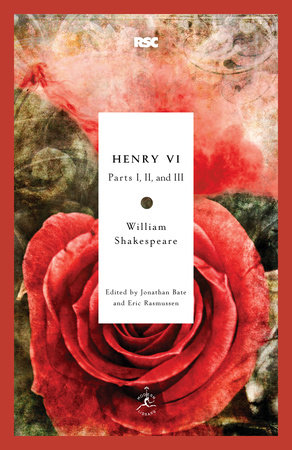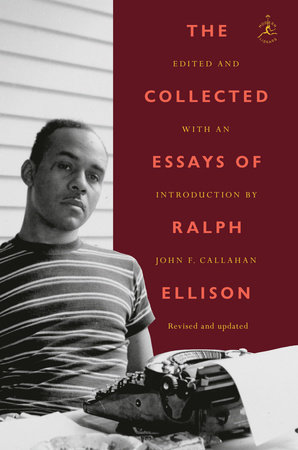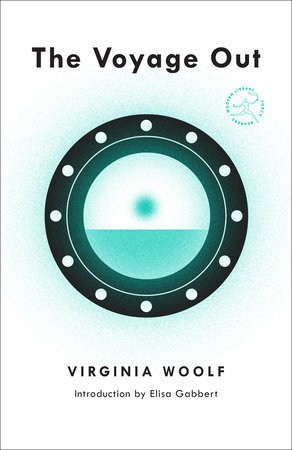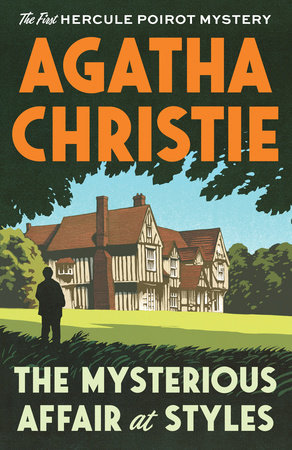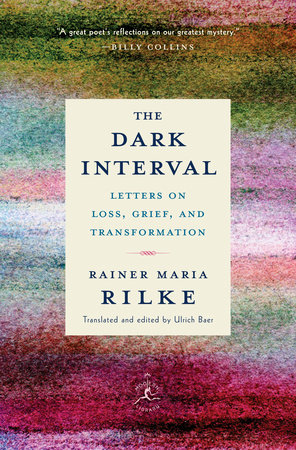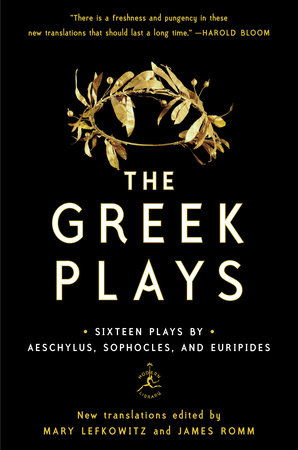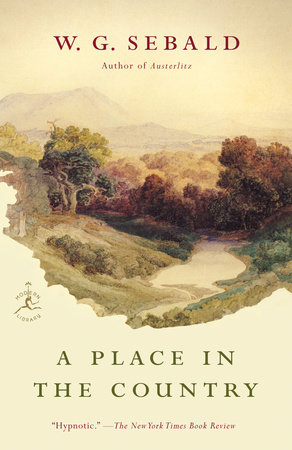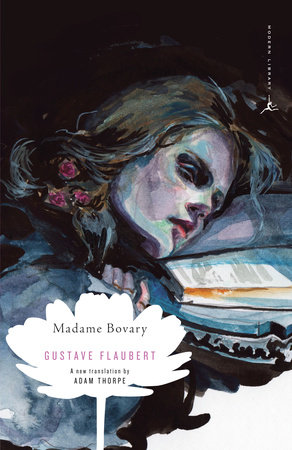Excerpt
Henry VI
Part One
IntroductionThroughout much of the fifteenth century, England had suffered the ravages of civil war. From the long struggles between the Lancastrians and the Yorkists, the so-called Wars of the Roses, the country had emerged in 1485 shaken but united at last under the strong rule of the Tudors. To Elizabethans, this period of civil war was still a recent event that had tested and almost destroyed England’s nationhood. They were, moreover, still troubled by political and dynastic uncertainties of their own. Queen Elizabeth, granddaughter of the first Tudor king, Henry VII, was unmarried and aging, and her successor unchosen. Her Catholic enemies at home and abroad plotted a return to the ancient faith renounced by Henry VIII in his reformation of the church. Spain had attempted an invasion of England with the great Armada in 1588, perhaps two years before Shakespeare began writing his Henry VI plays. It was in such an era of crisis and patriotic excitement that the Henry VI plays first appeared. Indeed, they helped to establish the vogue of the English history play, which was to flourish throughout the 1590s. England’s civil wars could be studied and analyzed now, from a perspective of over one hundred years later, and perhaps could provide a key to the present time. At hand was a new edition of Raphael Holinshed’s Chronicles, 1587, along with the earlier chronicle writings of Robert Fabyan, John Stow, and Richard Grafton, as well as Edward Hall’s Union of the Two Noble and Illustrate Families of Lancaster and York, John Foxe’s Acts and Monuments of Martyrs, and A Mirror for Magistrates.
How had these wars begun? Elizabethans searched for an answer, not in economic or social terms, but in religious and moral ones. According to a traditional and government-sponsored explanation, reflected to a large extent (though with many contradictions) in the chronicles of Edward Hall, and familiar to Shakespeare whether he agreed with it or not, the Wars of the Roses were a manifestation of God’s wrath, a divine punishment inflicted on the English people for their wayward behavior. The people and their rulers had brought civil war on themselves by self-serving ambition, arrogance, and disloyalty. King Henry VI’s grandfather, Henry IV, had come to the throne in 1399 by deposing and then executing his own cousin, Richard II (a momentous event, to be portrayed by Shakespeare in a later history play). Henry VI was himself an infant when he succeeded to the throne in 1422, owing to the untimely death of his father, Henry V. Too young at first to rule and never blessed with his father’s ability to act decisively, Henry VI was utterly unable to halt the struggle for power that developed among members of his large and discordant family. Ultimately, his very title to the throne was challenged by his kinsman Richard Plantagenet, Duke of York, who claimed to be rightful king by virtue of his descent from Henry IV’s uncle Lionel, Duke of Clarence. The Yorkist faction marched to battle against Henry VI’s Lancastrian faction (so named because for gen- erations the family had been possessors of the dukedom of Lancaster), and the war was on.
The providential view of these events was never wholly endorsed by the chroniclers and certainly not by Shakespeare. Edward Hall’s overall scheme is undeniably providential, and yet, as a historian, he presents a multiplicity of detail that cumulatively raises difficult issues of interpretation. At the same time, the providential view made good propaganda for the Tudor regime, and as such it gave widespread currency to the theory of God’s anger toward a rebellious people. The outcome of the war seemed to confirm this pattern: universal devastation and the deaths of those most responsible for the conflict led eventually, according to the theory, to appeasement of God’s anger and a restoration of order. Richard Plantagenet died in the struggle, as did Henry VI, Henry’s son Edward, and much of the English nobility. Richard’s son Edward survived to become Edward IV, but his manner of obtaining the throne was so manifestly offensive to Providence that (according to the theory) he suffered a retributive death at the hands of an angry God and was succeeded by his younger brother, Richard III. This last Yorkist ruler governed only two years, 1483–1485, and it was through Richard’s insane vengeance that God finally settled all his scores against the wayward English people. Having completed this purgation, God chose as his instrument of a new order Henry Tudor, Earl of Richmond, Henry VII. Although Henry’s return to England and defeat of Richard at the battle of Bosworth Field might outwardly resemble Henry IV’s seizure of power from Richard II, the difference was crucial to Tudor apologists. Richard III had to be seen, from the Tudor point of view, not as a flawed legitimate monarch, but as a mad usurper and tyrant; his defeat was not the disobedient act of one man but a rising up of the entire English nation at the prompting of divine command. Henry VII’s accession to power was officially viewed not as a precedent for further rebellion but as a manifestation of divine will without parallel in human history.
The essence of this providential view of events was that divine retribution and eventual reconciliation revealed themselves in the history of the war. The theory, of course, served the interests of the Tudor state and was in part a propaganda weapon calculatedly employed by the ruling class. Shakespeare’s commitment to it should not be taken for granted, and indeed a number of recent studies have expressed a profound skepticism toward the theory as the basis of Shakespeare’s dramaturgy. Especially in his later tetralogy, or four-play series, from Richard II to Henry V, Shakespeare reveals considerably more interest in the clash of personalities than in patterns of divine retribu- tion. Shakespeare does not endorse the orthodox view that Bolingbroke’s seizure of the throne is a violation of divine purpose for which he and England must be humbled; instead, Shakespeare portrays the issues as many-sided and subject to varying interpretations.
Throughout his history plays, indeed, Shakespeare avoids expressing the Tudor view of recent history through didactic narrators or chorus figures who might seem to represent the point of view of the entire plays; instead, he puts this interpretation into the mouths of avowedly biased and self-interested characters whose motives and testimony the audience can then evaluate as it sees fit. In 1 Henry VI, for example, the most detailed exposition of the official historical view is given to Mortimer (2.5), whose interpretation, though given special authority by the fact that a dying man is speaking, is self-interestedly consistent with his own frustrated claim to the English throne. His nephew, Richard Plantagenet, who of course endorses the anti-Lancastrian logic of Mortimer’s speech, is portrayed as consumed with ambition for the crown. In Shakespeare’s depiction of the Lancastrian-Yorkist conflict, neither side maintains a consistent ideological position but, instead, shifts argument as required by the expediency of the moment. Although in his earlier tetralogy from 1 Henry VI to Richard III Shakespeare does sometimes allow his contending characters to hearken back to the deposition of Richard II in order to explain the misfortunes of England’s civil wars, those characters often speak from self- interest and interpret history to their own advantage.
The individual plays of this earlier tetralogy, if seen or read separately, do not consistently comfort the spectator or reader with an assurance that all is working out according to God’s plan. The events themselves, seen from the immediate perspective of the moment, provide little comfort. At the end of 1 Henry VI, King Henry has surrendered to a disastrous marriage and has lost most of France; at the end of 2 Henry VI, the good Duke Humphrey of Gloucester is dead and his opportunistic political enemies are about to take King Henry off of his throne. The hostilities of Lancaster and York end at the conclusion of 3 Henry VI, to be sure, but prospects for a stable peace are doubtful in view of Richard of Gloucester’s baleful presence. The reciprocity of slaughter visited on both sides appears to stem as much from humanity’s insane desire for vengeance as from God’s evening of the score. Only in Richard III do we retroactively see a pattern of divine anger, retribution, and eventual appeasement that can then be applied to the tetralogy as a continuous narrative. E. M. W. Tillyard’s argument for a providential reading of these plays (in his Shakespeare’s History Plays, 1944) is based not coincidentally on a view of the tetralogy as a cohesive whole. What about the playgoers who saw the plays one at a time? The plays, so far as we know, were written and produced singly and were never staged in a continuous series. Even though the tetralogy as a whole may harmonize in part with the chronicles of Edward Hall and others, written to glorify the Tudor state and to give thanks for its having ended the prolonged anarchy of the fifteenth century, we can see that Shakespeare is no apologist for the Tudor state. He gives expression to a widely felt anxiety about political chaos. In each individual play and throughout the tetralogy, the overriding cosmic irony stressing the gulf between foolish humanity and the inscrutable intentions of Providence offers a potentially stirring conflict of which Shakespeare makes rich use.
Shakespeare wrote his first tetralogy some time between 1589 and 1592. Thomas Nashe’s Pierce Penniless, 1592, refers to 1 Henry VI as a huge crowd-pleaser; Robert Greene’s A Groatsworth of Wit rephrases a line from 3 Henry VI in that same year; Philip Henslowe’s diary records performances of “harey VI” in the spring of 1592; and in that same year, the Earl of Pembroke’s Men, who staged a version of 3 Henry VI under the title The True Tragedy of Richard, Duke of York, went out of business. Just how much of this first tetralogy may have been planned out when Shakespeare began work is hard to say. In fact, the very order of composition has long been in dispute. Despite the commonsense pleading of Dr. Johnson that Part Two follows from Part One as a logical consequence, some scholars argue that Part One was composed last. One piece of evidence is that a corrupt version of Part Two was published in quarto version in 1594 as The First Part of the Contention Betwixt the Two Famous Houses of York and Lancaster and that a corrupt version of Part Three was published in octavo in 1595 as The True Tragedy of Richard Duke of York. Part One had to await publication in the First Folio of 1623 and was registered for publication at that time as “The third part of Henry the sixth.” It seems odd, moreover, that Parts Two and Three make no mention of Lord Talbot, so prominent in Part One. If, however, as seems likely, the early printed versions of Parts Two and Three were memorial reconstructions without the authority of the official playbook, the claim of Part Two to have been written first may be unsubstantial. The very fact of prior publication of Parts Two and Three could explain why Part One was called “The third part” in 1623. Although Talbot is not mentioned in Parts Two and Three, these texts do recall important aspects of Part One. It is certainly possible that Shakespeare wrote all three parts in normal order.
Equally vexing is the question of authorship. Many Elizabethan plays were written by teams of authors, and Shakespeare might have collaborated with others, especially at the beginning of his career. Perhaps he rewrote older works by such writ- ers as Thomas Nashe, Robert Greene, and Christopher Mar- lowe. Theories of multiple authorship, once a commonplace of nineteenth-century scholarship and then discounted by much twentieth-century criticism, have recently been argued anew by the editors of the Oxford Shakespeare (1986). Yet there is much reason to believe that Shakespeare is essentially the author of the entire Henry VI series. Greene’s famous resentment toward Shakespeare as the “upstart crow beautified with our feathers” seems more the envy of a lesser talent than the righteous indignation of one who has been plagiarized. The chief criteria used to “disintegrate” the plays into the hands of various supposed contributors are those of taste and style; for example, the low comic scenes of Joan of Arc were long held to be too coarse for Shakespeare’s genius. Today most critics see a consistency of view throughout the Henry VI plays, despite minor inconsistencies of fact that might be the result of simple error or of using multiple sources, and they find nothing in these plays inimical to Shakespeare’s budding genius. This belief confirms the judgment of Heminges and Condell, Shakespeare’s fellow actors and editors of the 1623 Folio, who placed all the Henry VI plays among Shakespeare’s collected works in their historical order.
If Shakespeare was at least chiefly responsible for the Henry VI series, he may also have been an important innovator in the new genre of the history play. Only the anonymous Famous Victories of Henry V is certainly earlier in dealing with recent English history. There were, to be sure, plays about legendary British history, such as Gorboduc or The Misfortunes of Arthur, or about far-off lands, such as Cambises or Marlowe’s Tamburlaine. All these plays had explored by analogy political questions fascinating to Elizabethan England, and Tamburlaine’s immense success had certainly established a vogue for grand scenes of military conquest. Still, the English history play as a recognizable form came into being with Henry VI. The success was evidently tremendous and established Shakespeare as a major playwright.
1 Henry VI, like all the plays in Shakespeare’s first tetralogy, comprises a large number of episodes, a sizable cast of characters, and a wide geographical range. The subject is England’s loss of French territories because of political division at home. The structure of the play is one of sequential action displayed in great variety and in alternating scenes that are thematically juxtaposed and contrasted with one another. In the rapid shifting back and forth between the English and French court, for example, Shakespeare establishes a paradoxical theme: France triumphs in England’s weakness, not in her own strength. The French court is merely one of debased sexual frivolity. The English are naturally superior but are torn apart by internal dissension, by a “jarring discord of nobility,” and by a “shouldering of each other in the court” (4.1.188–9) among those attempting to take advantage of Henry VI’s weak minority rule and his vulnerable genealogical claim. Two of young Henry’s kinsmen jockeying for position are Humphrey, Duke of Gloucester, and the Bishop of Winchester. Humphrey’s intentions are virtuous, but he is unable to prevent the opportunistic scheming of his rival. Winchester, despite his ecclesiastical calling, is a man of evil ambition and corrupt life, wholly intent on destroying the right-minded Gloucester. Shakespeare employs derisive anticlerical humor against Winchester and enlists the Protestant sympathies of his Elizabethan audience against the meddling Catholic Church’s attempts to exploit England’s weak kingship for its own ulterior purposes.
Even so, the menace threatening England is not seen as a Catholic conspiracy throughout; Winchester is only one opportunist seeking to exploit the political vacillation and factionalism at court. Of greater danger in the long term is Richard Plantagenet, scion of the Yorkist claim. From the start, Shakespeare portrays him as cunning, able to ingratiate him- self and bide his time, and ultimately ruthless. In these qualities, he ominously foreshadows his youngest son and namesake, Richard III. In this play, Plantagenet’s strategy is to allow England to wear herself down by the various conflicts at court and military losses abroad; once the situation is reduced to anarchy, Plantagenet will be able to move in. The strategy works only too well.
Chief defender of England’s military might in France, and eventual victim of the bickering among the English nobility, is Lord Talbot. He is the heroic figure of this play with whom Elizabethan audiences identified. As Thomas Nashe wrote in his Pierce Penniless, 1592: “How would it have joyed brave Talbot (the terror of the French) to think that after he had lain two hundred years in his tomb, he should triumph again on the stage, and have his bones new embalmed with the tears of ten thousand spectators at least (at several times) who, in the tragedian that represents his person, imagine they behold him fresh bleeding?” As the undiminished hero of 1 Henry VI, Lord Talbot pleads for political and military unity against the French and demonstrates that with such unity England would be invincible. Talbot is “the terror of the French” (1.4.42), able to hold off a troop of French soldiers with his bare fists, and reputed to twist bars of steel. As the embodiment of chivalry, he delivers a richly deserved rebuke to Sir John Falstaff (historically “Fastolfe,” but called “Falstaff” in the Folio text of this play), the cowardly soldier who foreshadows the fat knight of 1 Henry IV. In 1 Henry VI, cowardice and honor are rendered in black and white extremes. Talbot is a model general, illustrating all the qualities of great leadership advocated by the textbooks of the age: he is a stirring orator, fearless, witty, and concerned with a proper lasting fame. In the touching scenes with his son, Talbot rises triumphantly above death to become the immortal embodiment of brave soldiership. Yet, even if 1 Henry VI offers this one important model of rhetoric and arts of leadership put to right use, Talbot’s presence nonetheless lends itself more to a profound anxiety about historical events than to a reassuring confidence in divine assistance. Talbot’s unnecessary death offers a devastating critique of the weak leadership that has allowed authority in France to be divided among political rivals.
The relations between men and women in this play are also used to create thematic contrasts. Talbot’s chief military rival in France is Joan of Arc; and, although many earlier scholars have wanted to deny Shakespeare’s authorship of the Joan of Arc scenes, their thematic function is central. As a woman in armor, Joan is the embodiment of the domineering Amazonian woman to whom the effete and self-indulgent dauphin, Charles, weakly capitulates. The sexual roles have been reversed; Venus triumphs over Mars. Joan’s role as virgin-warrior, her trafficking in demonology, and her obscenely parodic resemblance to the Virgin Mary all suggest a profound male-oriented ambivalence toward women in positions of authority—including, by implication, Queen Elizabeth. Joan’s sexuality is not only demonic but also obsessive in its promiscuity and seeming insatiability. Her English captors at the end of the play (5.4) mock Joan for claiming to be a virgin even while she attempts to save her life by asserting that she is pregnant. York scoffs, “Now heaven forfend! The holy maid with child?” When she appears not to know who the father might be, since she has had so many sexual partners, his glee is unrestrained: “And yet, forsooth, she is a virgin pure!” (5.4.65, 83). Irreverence toward her claim to be la Pucelle is thus combined with a Protestant swipe at Catholic Mariolatry. She even attempts to practice her witchcraft (with sexual overtones) on Talbot and his son, but in vain. Talbot’s sense of duty never succumbs to Circean voluptuousness. In his encounter with the Countess of Auvergne, Talbot resourcefully outwits another woman who, like Joan, seeks to entrap him. The Countess finally submits to Talbot’s courteous but firm authority, thereby reestablishing the traditional relationship of male and female. Talbot stands for every kind of decency and order that ought to prevail but is senselessly destroyed through England’s political division.
The last woman introduced in the play, Margaret of Anjou, is another domineering female. Her adulterous relationship with the fleshly Suffolk, and her ascendancy over the weak Henry VI, are to be of fateful consequence in the ensuing plays. Her scenes, although once dismissed as an afterthought, linking 1 Henry VI with the following plays, in fact recapitulate the motifs of female dominance with great dramatic effect. Young Henry VI is no Talbot; inexperienced in love and highly impressionable, he surrenders to the mere description of a woman he has not even seen and refuses a politically advantageous match arranged by Duke Humphrey in order that he may marry a conniving Frenchwoman without dowry. The marriage also anticipates that of Edward IV (in 3 Henry VI) to a penniless widow who has caught his roving eye, when Edward could have obtained a handsome dowry and a favorable alliance by marrying the French King’s sister-in-law. Such dismal triumphs of passion over reason are emblematic of the general decay among the English aristocracy. Despite Henry’s weakness, he is the central character of this play after all, and his enervating surrender in love is a fitting anticlimax with which to end the first installment of England’s decline. In the theater we are left at the end of 1 Henry VI with an appalling sense of dislocation and loss for which no remedies appear to be at hand.


